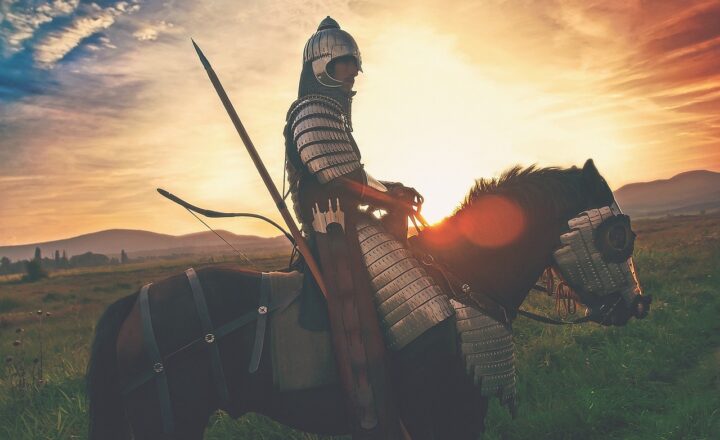The Role of Iron in Ancient Warfare: How Armies Used Metal to Gain an Edge in Battle
November 14, 2024

Iron has played a pivotal role in shaping human civilization, especially in the realm of warfare. Long before firearms and modern technology took the stage, the use of iron significantly transformed the tactics and equipment of ancient armies, providing them with a powerful advantage over their adversaries. In this article, we delve into the various aspects of how iron was utilized in ancient warfare, exploring its impact on weaponry, armor, and battlefield strategies, and how it ultimately influenced the course of history.
1. The Discovery and Rise of Iron: An Overview
The transition from the Bronze Age to the Iron Age marked a significant milestone in technological and societal advancement. Bronze, an alloy of copper and tin, had been the material of choice for tools and weapons due to its hardness and workability. However, the discovery of iron ore—an abundant material—changed the game.
In around 1200 BCE, the Hittites in Anatolia were among the first to extract and forge iron into weapons, igniting a revolution in metallurgy. Iron tools and weapons were not only more plentiful but also superior in strength and durability compared to their bronze counterparts. This newfound accessibility allowed various civilizations—from the Assyrians to the Chinese—to equip their armies with iron weaponry, dramatically altering military dynamics.
2. Iron Weaponry: Crafting Superior Arms
As armies began to adopt iron, weapon-making techniques evolved. There are several key weapons where iron proved influential:
- Swords: Iron swords became a prominent fixture on the battlefield. Their ability to hold a sharper edge compared to bronze enabled soldiers to deliver more lethal blows. The Roman gladius, for instance, utilized iron to gain an edge in close combat situations.
- Spears and Javelins: Iron tips were added to wooden shafts to create effective spear and javelin weapons. These innovations boosted the range and penetrative power of thrown weapons, aiding in versatile battlefield strategies.
- Shields and Armor: While weapons improved, armor also saw enhancements. Iron plates were fashioned into helmets, breastplates, and shields, providing greater protection against both blunt force and sharp blades. The heavier armor offered by iron enabled soldiers to endure extended battles, changing the nature of engagements.
The technological advancements enabled by iron metallurgy effectively changed the course of battles, as soldiers equipped with better weapons and armor gained a palpable edge over their foes.
3. The Strategic Advantages of Iron Weaponry
The strategic implications of iron in warfare were vast. Armies not only benefited from the physical capabilities of iron but also from the psychological advantages it conferred:
- Improved Soldier Morale: With reliance on tougher weapons and armor, soldiers felt more confident facing their enemies. The advancements fostered a belief in the superiority of their gear, driving armies to rally fervently to battle.
- Tactical Flexibility: Iron weaponry allowed for various combat strategies. Armies could execute flanking maneuvers more effectively with lighter iron weapons, while heavily armored troops could absorb enemy charges more resiliently.
- Production and Supply Chains: Iron was more abundant than the materials needed for bronze, facilitating the mass production of weaponry. This improved supply chains allowed larger armies to be equipped and sustained over prolonged conflicts.
The ramifications of adopting iron were multifaceted, ensuring that armies wielding iron policed the ancient world more effectively.
4. Famous Battles and Campaigns Utilizing Iron Weaponry
Various historic battles illustrate the impact of iron in warfare. Two prominent examples include:
- The Battle of Kadesh (c. 1274 BCE): The Egyptians, employing chariots with iron weapons, faced off against the Hittites. Although ultimately a stalemate, the effectiveness of iron-controlled weapon systems demonstrated their significance in ancient warfare dynamics.
- The Roman Conquests (1st Century BCE – 1st Century CE): Rome’s extensive use of iron weaponry and armor during its expansion enabled vastly superior military strategies. The Roman legions often overwhelmed enemy forces through their highly organized, iron-equipped infantry formations.
Each of these battles celebrated the advantages of iron weaponry, altering their historical trajectories significantly.
5. The Transition and Fall of Iron: Towards Modern Warfare
The Iron Age set the foundation for future advancements in metals and weaponry. However, as we entered the modern era, the limitations of iron began to emerge. By the late medieval period, the advent of steel—a refined iron alloy— marked a pivotal shift. Steel offered superior strength and flexibility. The rise of gunpowder weaponry further rendered traditional iron weapons obsolete.
Despite its decline in the face of evolving technology, the legacy of iron in warfare remains undeniable. The methodologies of warfare changed, but the foundational impact of iron continued to resonate throughout subsequent ages, influencing weapon design and military tactics.
Conclusion: Iron’s Lasting Legacy in Warfare
Iron significantly influenced the development of warfare, transforming armies’ capacities and capabilities in ancient times. The abundance of iron allowed for the crafting of superior weaponry and armor, elevating military effectiveness and psychological confidence in battle.
As a cornerstone of ancient warfare, iron not only shaped conflict tactics but also impacted the societal structures of civilizations. Today, as we reflect on the evolution of warfare, we recognize the integral role that iron played in developing military technologies that continue to influence battle strategies through the ages. Though iron may no longer reign supreme, its legacy as a game-changer in the annals of military history remains.
By understanding the significance of iron in ancient warfare, we can appreciate how pivotal materials can shape the tides of history, emboldening soldiers and revolutionizing strategies that dramatically change the course of human civilization.







